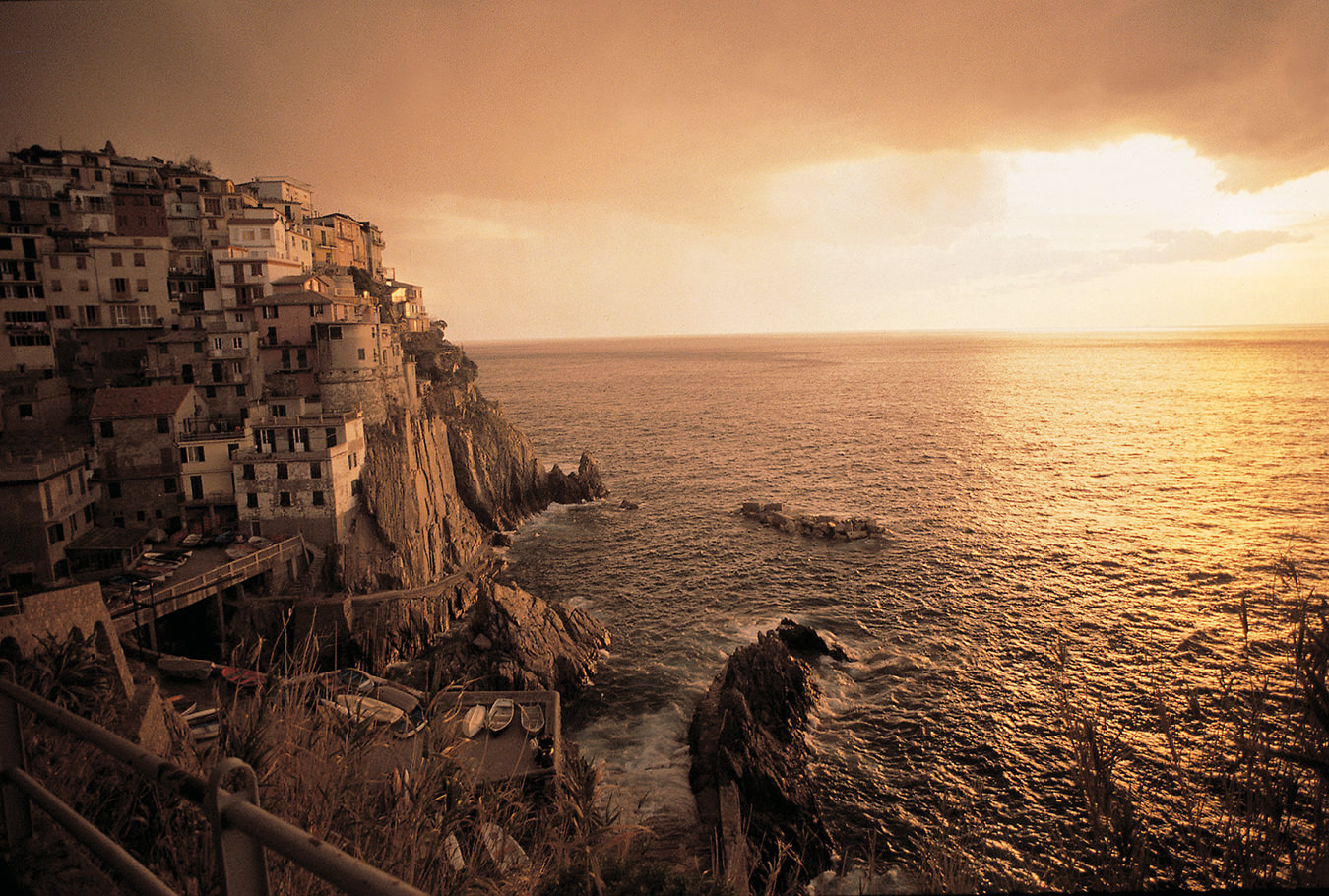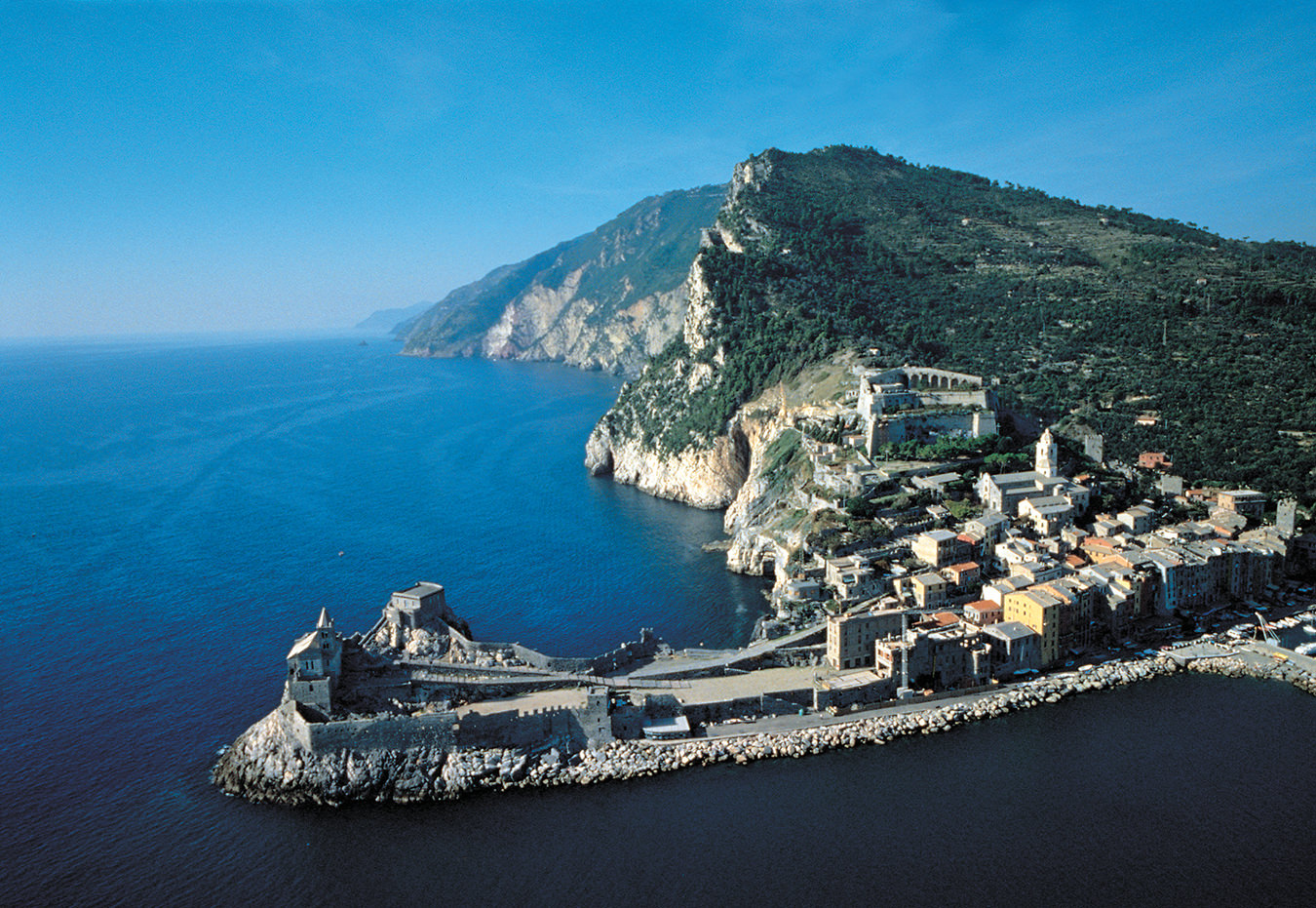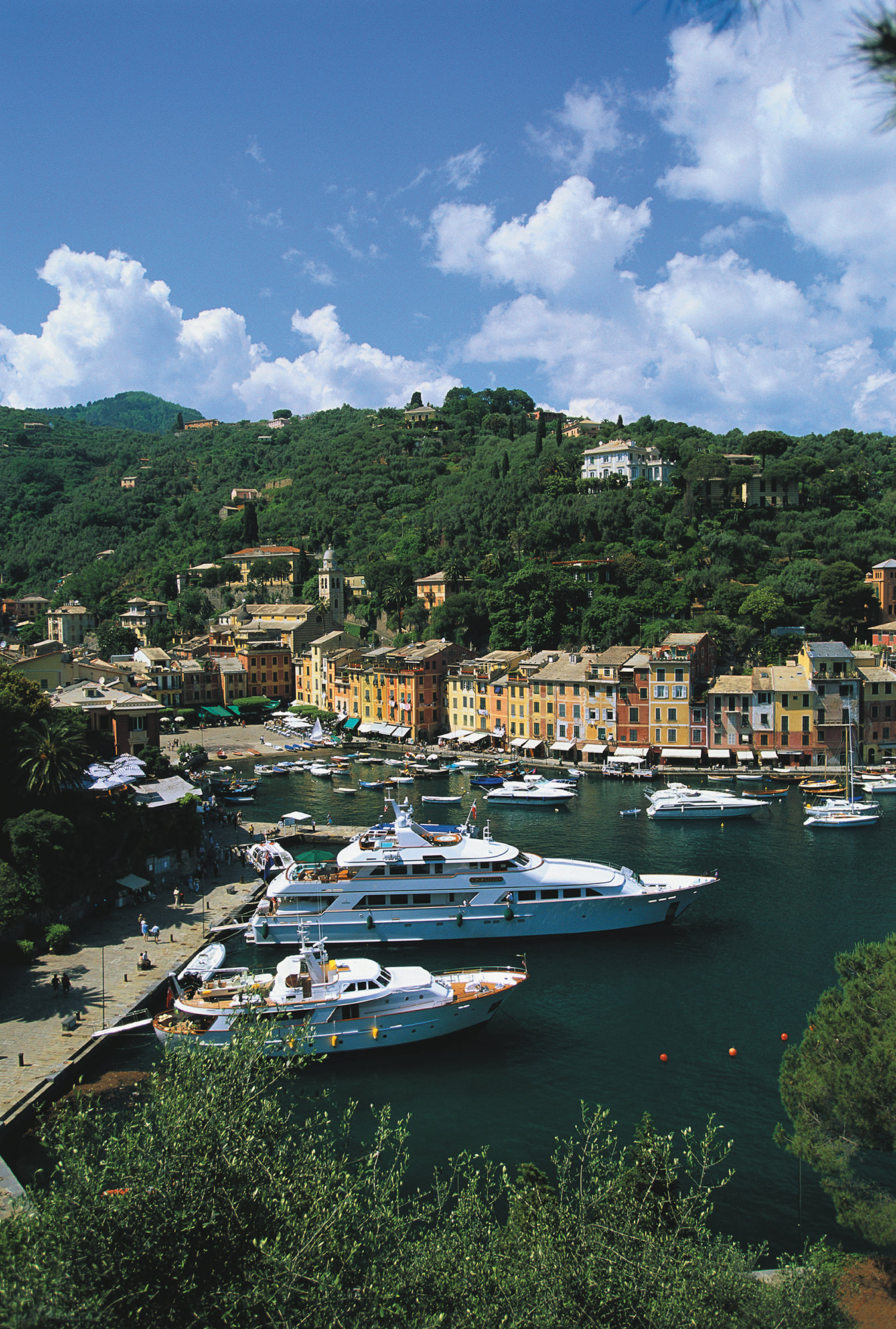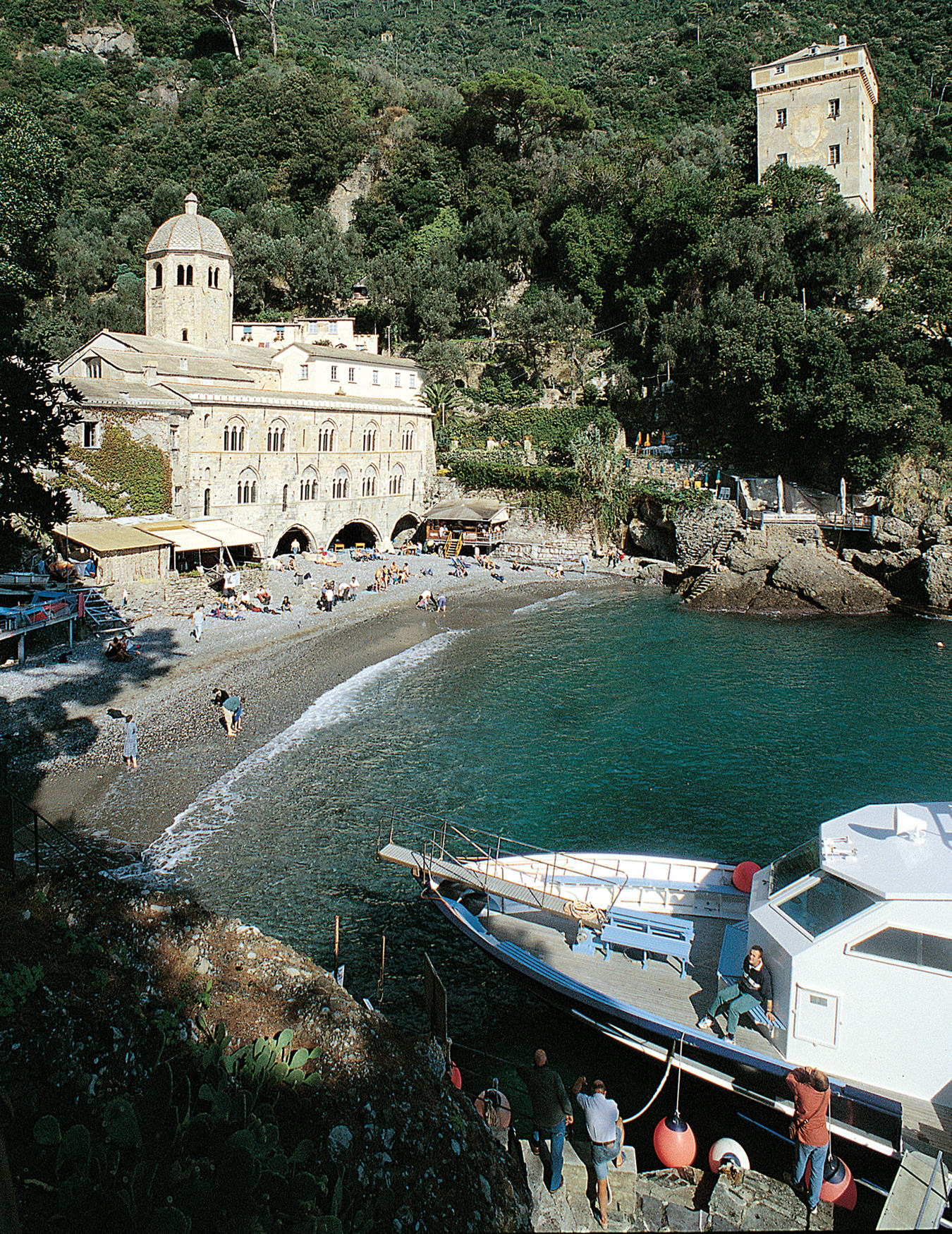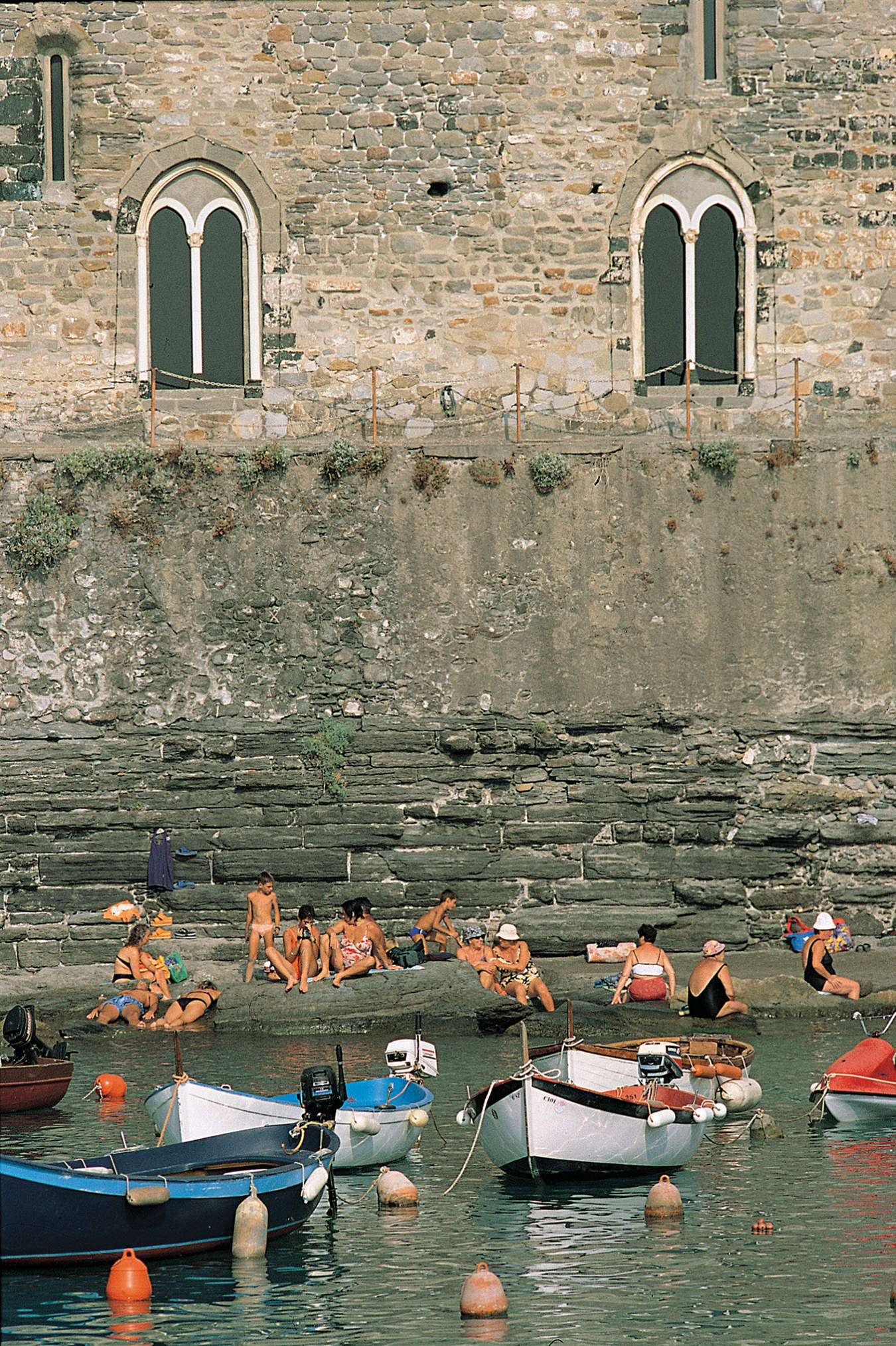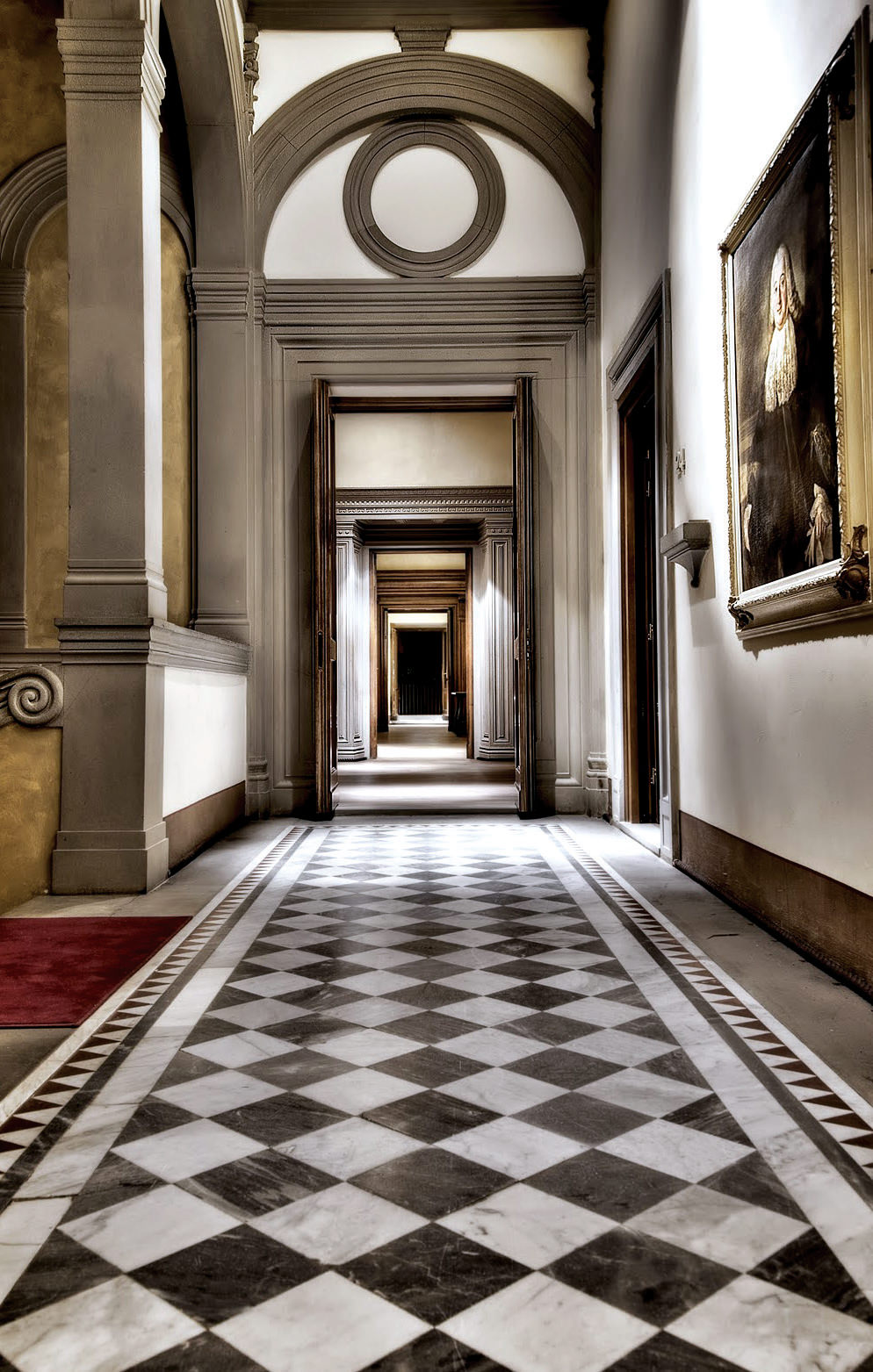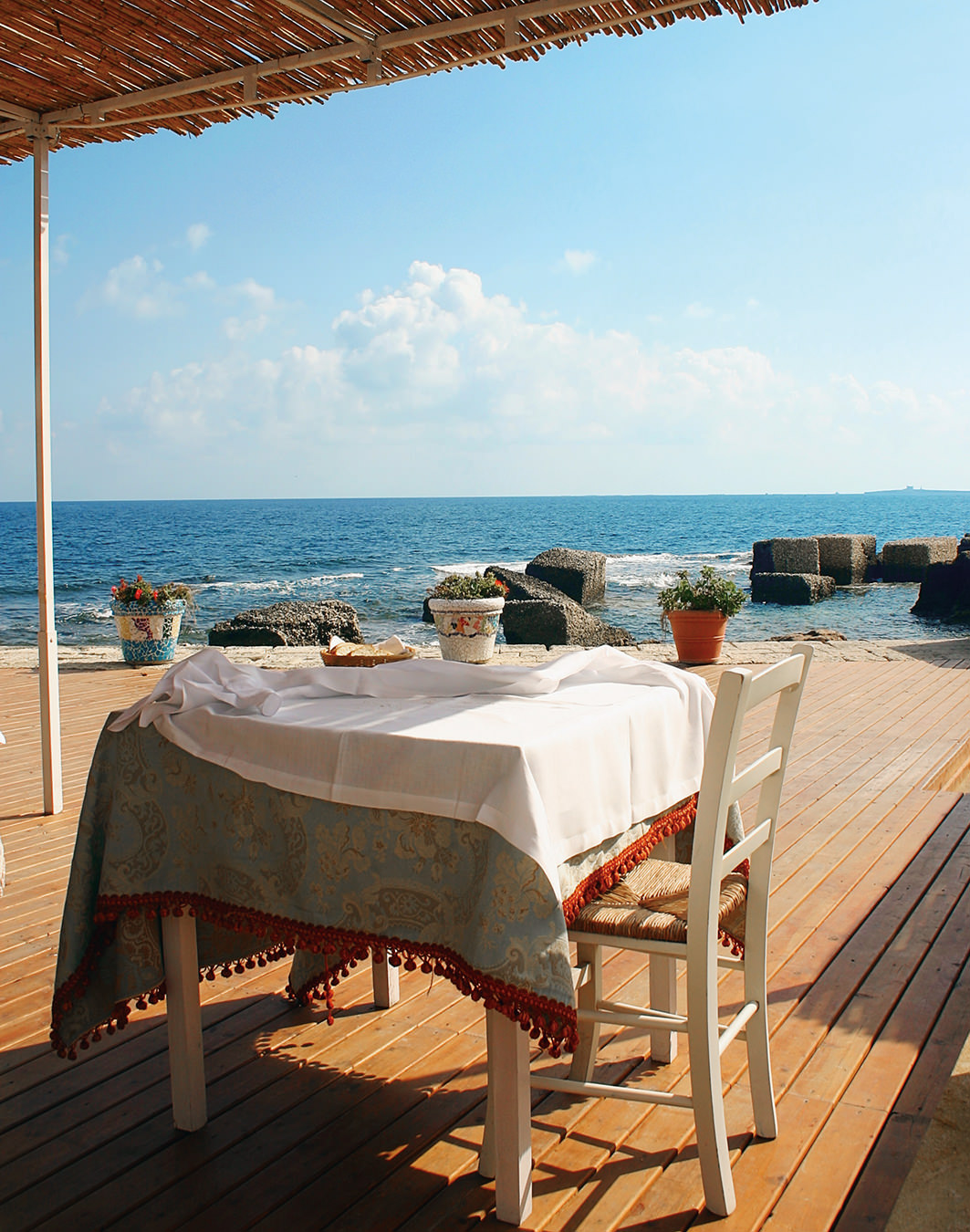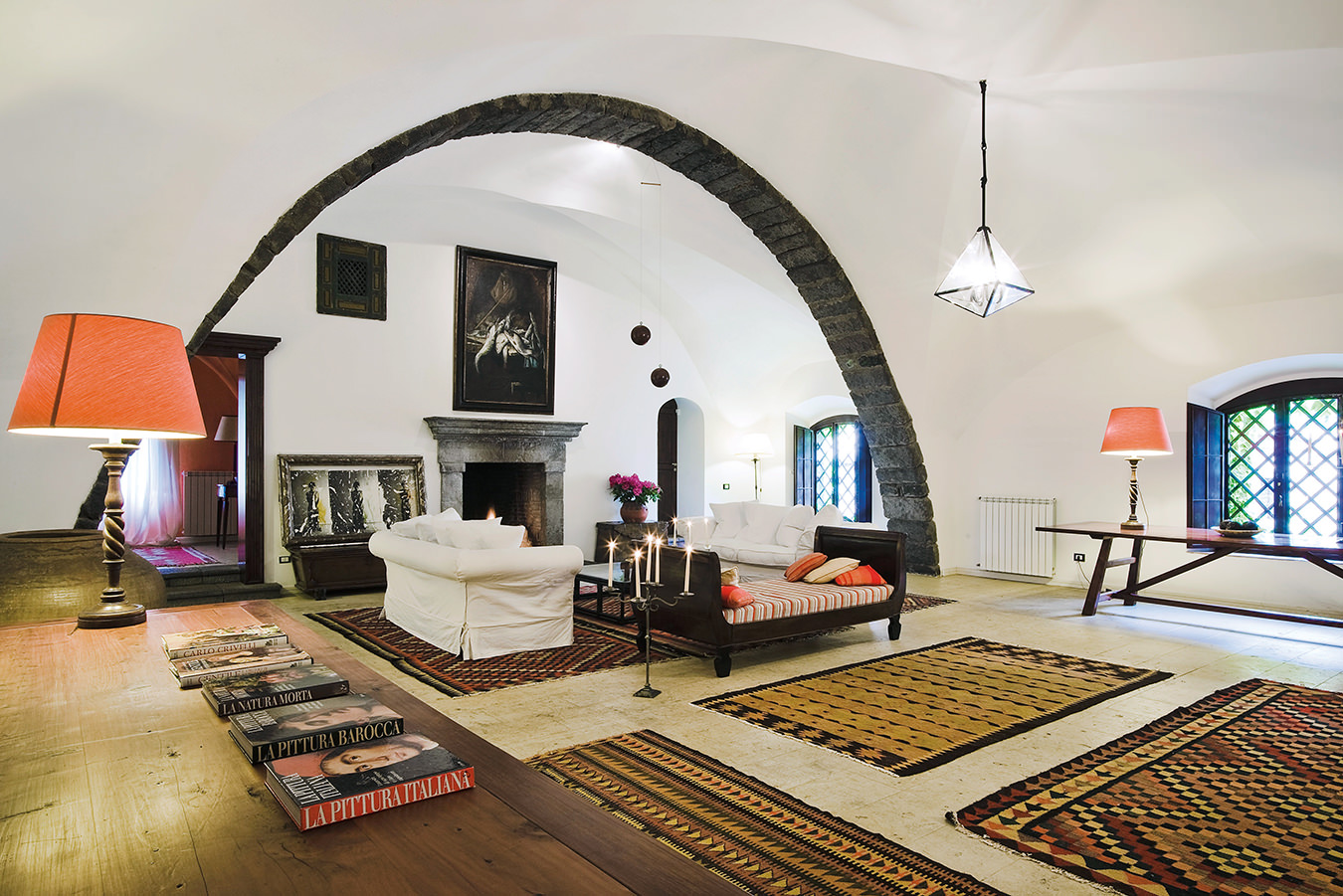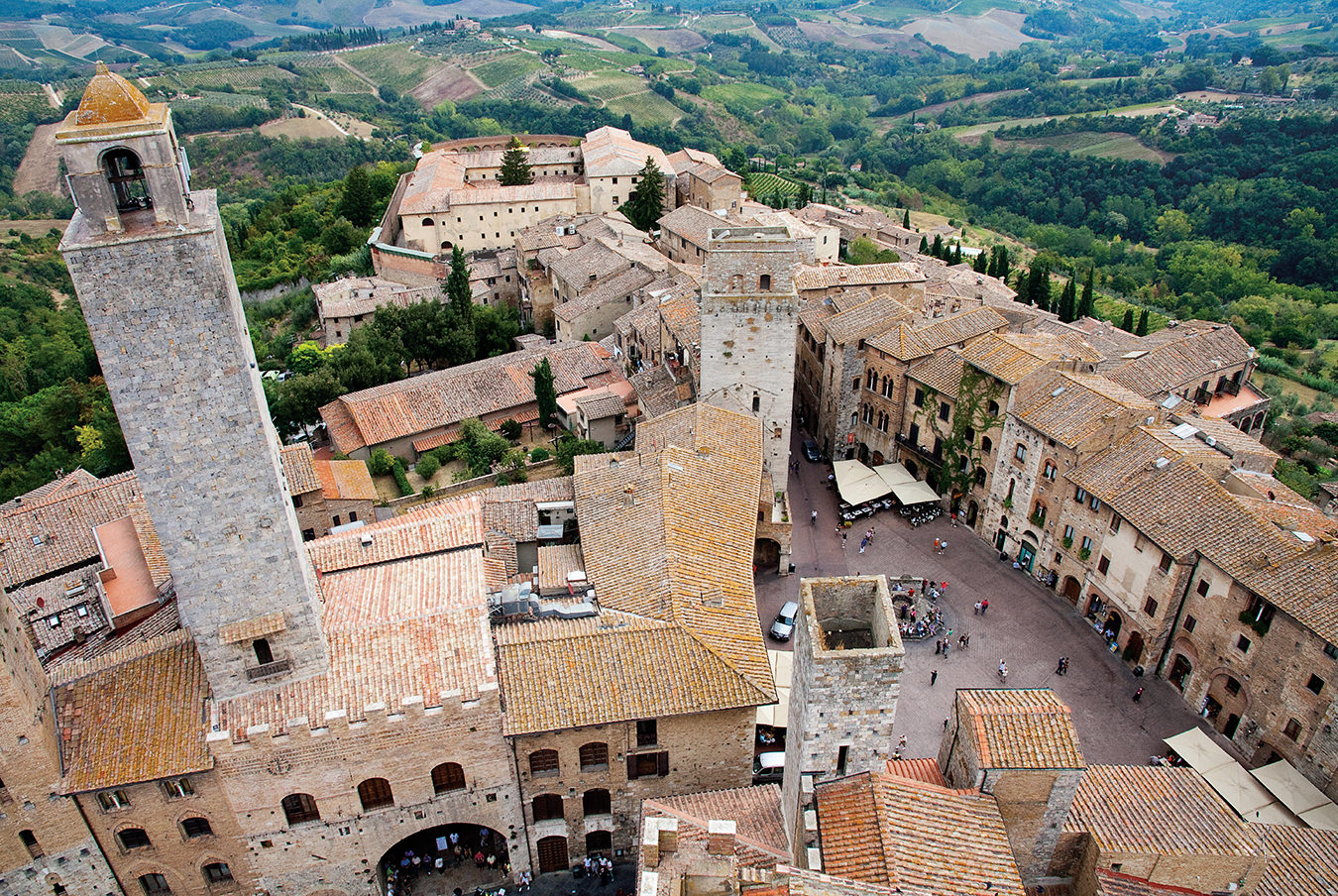From Ventimiglia to La Spezia
The Italian Riviera, squeezed between the sea and the mountains.
Liguria is consigned to the widespread geographical misconception that it is a narrow strip of land by the sea. Liguria is, in fact, not simply one but a collection of several distinct regions. This plurality does not end with the traditional breakdown into Levante, Ponente and the Genoa area in between; a tripartite division that was established in the early Middle Ages. The region can also be divided along its length. There has always been a profound dichotomy between the coast and the mountainous areas inland.
Anyone passing through the region today by car or by train sees precisely what they would expect to see from the map: a long thin curving strip of coastline squeezed between the sea and the mountains, glimpsed through the dazzling gaps between one tunnel and the next, or more panoramically from the viaducts. And that would seem to be it: just a string of famous seaside resorts as announced on the loudspeakers of the train stations, or written on the exit signs punctuating the highway that runs through the region, from Tuscany to France.
The serpentine arc of coastline sweeping serenely from Ventimiglia to La Spezia is Liguria’s defining mark. The Ligurian coast runs, counting all the hidden inlets, jagged headlands, and rocky covers, 450 kilometres. This sum of different regions has two distinct Rivieras. The western Rivieria di Ponente, (Riviera of the Setting Sun) which reaches from the French border to Genoa, has a stretch of ports and palm-lined beach resorts backed by dense green hills barely penetrated by modern roads. Its nickname, Riviera dei Fiori, harks back to the days when the hills were carpeted with exotic flowers; blooms today flourish under plastic greenhouse panels that give the landscape a rather more futuristic look. Patchwork rows every shade of green testify to the Ponente’s new forte: commercially grown greenery that garnishes florists’ bouquets, from eucalyptus to broom to ferns. The Ponente is also home to the fanciful seaside resorts of San Remo and Bordigheria, similar to their glittery French cousins in their unabashed pursuit of pleasure.
The self-styled capital of the Riviera di Ponente, San Remo, is the area’s largest resort, lined with polished hotels, exotic gardens, and seaside promenades. Though the inner sanctum of its Old Town is marginally menacing, a network of pedestrian streets just below holds a world of butchers, bakers, and Ligurian culinary boutiques. Grand 19th-century hotels and ancient, towering palm trees line the boulevards, and the casino retains its Old World glamour.
East of Genoa, spanning the coastline as far as Portovenere, is the Riviera di Levante (Rivieria of the Rising Sun). Its minuscule bays and inlets are steeper, sculpted by nature into rocky cliffs. Set in the heart of the region is Genoa, Italy’s largest commercial port, where magnificent Renaissance palaces elegantly wear the dusty patina of time, testament to the wealth of the city’s seafaring past. Every schoolchild knows Genoa as the birthplace of Chris-topher Columbus, and many would become wide- eyed knowing it is the home of the world’s largest aquarium.
The Tigullio Gulf, a neverending range of greens and blues, has captivated both celebrities and international jet setters. In a short stretch of Liguria, expansively blessed by nature, splendid resorts appear. All share the same palpable essence, yet each has a unique character. It is a necklace hung with jewels, the most dazzling of which is Portofino, perhaps the most photographed village in the world and one of the most famous views in Italy. Brightly painted houses frame the port in a burst of colour. With its main piazzetta, and the villas hidden amidst the olive-groves, Portofino is a heady cocktail of elegant social life and extreme privacy. Everything is extraordinary here: the landing of a yacht, an evening spent in a nightspot, a walk to the castle, and the village’s popular celebrations, baroque yet simple.
Portofino is a leading figure in international tourism, but still manages to remain a subtle, acquiescent background. Every day, every night, a thousand and one extraordinary stories are set in motion. Portofino since the fifties has been one of the symbols of la dolce vita; on the quayside or in one of the characteristic alleyways you might just bump into the figures that appear in popular dreams; Hollywood stars, great names from the spheres of art, politics, and business.
Portofino since the fifties has been one of the symbols of la dolce vita.
Only a few miles away is another unexpected spectacle; a cove hidden between the rocks where green primordial vegetation is reflected in quiet waters. Set on the beach is a masterpiece of medieval architecture—the abbey of San Fruttuoso, an apparition from past ages. It is easy to see why Byzantine monks first sequestered themselves at this tiny hideaway bay. While it can be overwhelmed by boatloads of day-trippers to its abbey and its fingernail of a pebble beach, this tiny, hill-framed inlet feels miles—and aeons—away from civilization once the ferries retreat. Only one hotel, Albergo da Giovanni, now allows a lucky few a sleep over of monastic bliss.
Santa Margherita Ligure is a beautiful old world resort, and has everything a Riviera playground should have—plenty of palm trees and attractive hotels, cafés, and a marina packed with yachts. Here the most varying demands are met, and bustle and calm are only apparently contradictory states. In Santa Margherita one experiences a great sense of freedom and at the same time the pleasant impression of belonging; a fleet of fishing boats keeps up the ancient traditions of fishing and seamanship. It also keeps up the reputation of one of the most characteristic and tasty catches along the whole coast: the famous Santa Margherita lobster.
The most dream-worthy stretch of the Italian Riveria is Cinque Terre, a piece of coast tinseled in sunbeams and carbonated by waves. A series of five tiny cliff-villages that cling above the sea were long inaccessible to the outside world except by terraced footpaths and small boats. Only in the 20th century did the railroad connect the towns to civilization. Before that, there was nothing but the path under your feet, the fishbowl sky and the sea. Narrow roads now connect the dots but require an investment of time and patience. Nowhere else does the lure of the Mediterranean and village life combine so potently to shipwreck travellers’ speedy itineraries.
Cinque Terre, “five lands”, was first described in medieval times as the “five castles”. Tiny villages, which grew up in the protective shadows of the castles, were raided repeatedly by Turkish Saracen pirates. The territory of Cinque Terre, Monterosso al Mare, Vernazza, Corniglia, Manarola, and Riomaggiore, is one of Italy’s best preserved areas, both in terms of its people and its natural scenery. The aura of isolation and the dramatic coastal scenery surrounding these five coastal villages has made this enclave one of the eastern Rivieria’s most remarkable attractions. It is a land of stunning vineyards overlooking the sea, a stretch of coast where cars are forbidden to enter.
Every village sports its own features: Monterosso is the most accessible and therefore the largest and has a sandy beach, a medieval castle, and a convent featuring many paintings and an enchanting cloisters. Vernazza is often voted the most charming of the five, thanks to its Old Town and its pocket-size port. Corniglia, perched on a cliff, boasts of Roman origins. Manarola and Riomaggiore are linked by the most romantic road in the world, Via dell’Amore, which was hewn out of the rocky coast in the 1920s. It offers beautiful panoramic views of the sea as it winds its way through the rocks. Whichever village you choose as a base, take the time to explore a few and settle into their quiet rhythm; find a rocky perch and meditate on the ancient symbiosis between man and mare.
The most dream-worthy stretch is Cinque Terre, a piece of coast tinseled in sunbeams and carbonated by waves.
The Gulf of La Spezia, a broad, sheltered bay jutting into the Ligurian coastline, is better known as il golfo dei poeti, the Poets’ Gulf. Its waters churning around black rock and pebble shores, its key towns craggy with ruined castles, its row houses glowing in tones of ochre, make this a romantic and inspiring area—despite the modern tourism that has replaced the savage beauty sung of by Byron and Shelley. The blend of art and nature, and the picturesque sequence of colourful houses divided by narrow alleyways, create a magic not spoiled by the crowds. La Spezia itself is a sprawling industrial city with a massive naval port. But find a quieter corner—a back street, a pine-shaded rock, a chunk of Romanesque rampart overlooking the sea—and it’s easy to call forth the poets’ muse. Portovenere anchors the western peninsula that shelters the gulf, and its watercolour-pretty harbour embodies the epic best of the gulf—stacks of primary-colour fishing boats, narrow backstreets leading up ramparts to a church, and two ruined castles. Just below the ramparts, a plaque marks Byron’s Grotto, from whence the poet is said to have swum to San Terenzo to pop in on the Shelleys. The monumental entrance to the ancient town is a gateway bearing the Latin inscription “Colonia Januensis 1113”, a reminder that in the 12th century this site was fortified by Genoa as a major defence outpost against Pisa.
Genoa is the ancient capital, Italy’s most unjustly unknown city, shunned not only by the tourists that flock to the beaches along the Riviera, but even by many of its own residents. Genoa’s importance lies both in the fact that it was the region’s mater et domina, and because it is also the most northern of the continent’s southern cities. It still encapsulates much of urban culture in the Mediterranean.
Genoa is in many ways a larger version of the typical Ligurian seaside town, organized vertically with steep, narrow streets, slate roofs, and painted facades. Genoa’s palaces and villas are perhaps the most pleasant surprise for visitors to the city, although time and patience are needed to fully appreciate their architecture. Genoa does not make a great show of itself, unlike so many other Italian cities which have that most typical of Italian urban features: the piazza. Genoa has very few, which are either 19th- or 20th-century creations, or not really piazze at all. Perhaps Genoa’s most outstanding monuments are in fact the extraordinary run of portals that line Strada Nouva dei Palazzi, the Via Aurea or Via Garibaldi as it is now more democratically known.
Liguria is an elegant and secluded salon, simple as a fishing village, lavish as a backdrop designed for an epic film. It is an inimitable expression of the work of generations and of the powerful hand of nature in a particularly friendly mood.
From one long stretch of Mediterranean the gods wrought two Rivieras—Italian and French—what’s your pleasure? Travel and live on olives, pesto, and espresso, but decline to take this sun-blessed pocket of coastline for granted. The exposure to such gorgeousness could spoil you for life.
Images courtesy of Italian Government Tourist Board.

